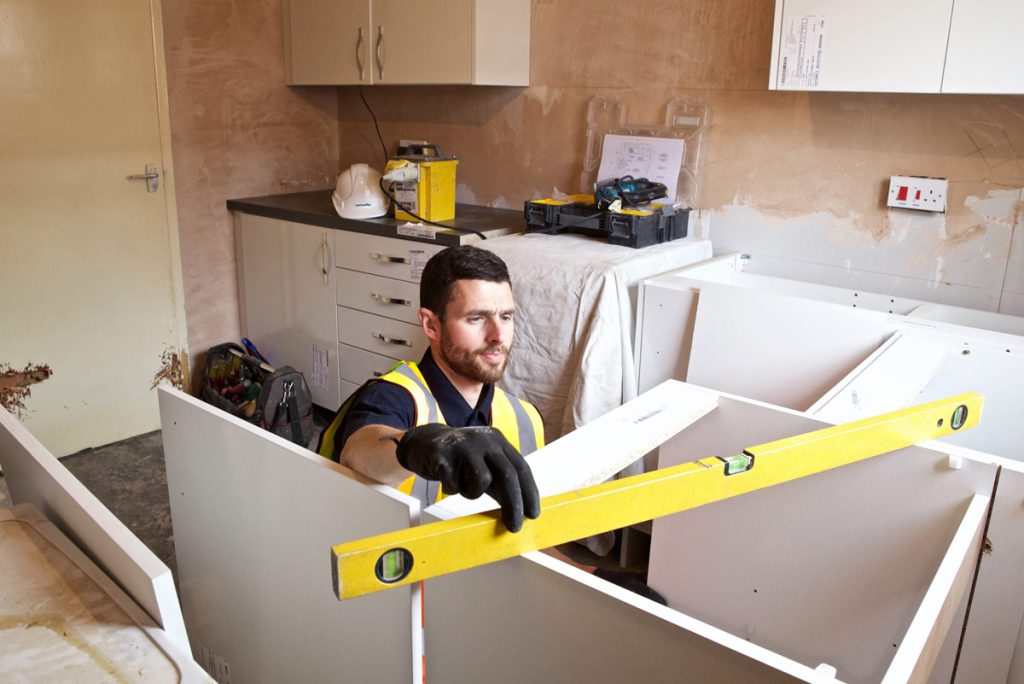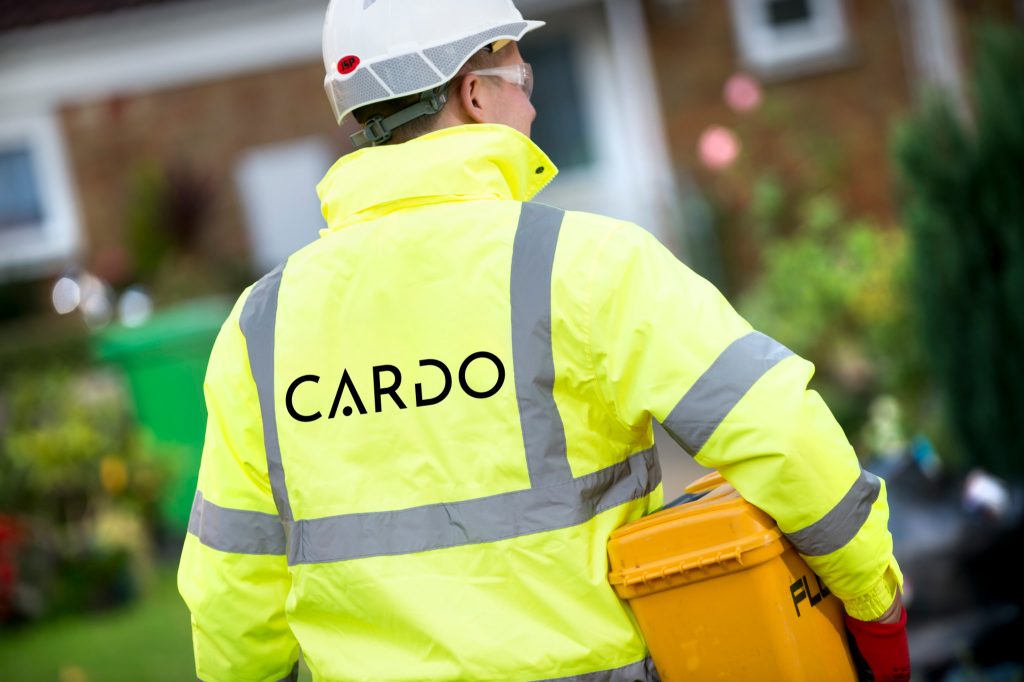For social housing providers, local authorities, and landlords, Planned & Preventative Maintenance is the key to ensuring properties remain safe, compliant, and cost-effective over the long term. By adopting a proactive maintenance strategy, housing providers can prevent minor issues from escalating into costly repairs, extend the lifespan of housing stock, and improve tenant satisfaction.
As a trusted leader in social housing maintenance, Cardo Group specialises in delivering comprehensive planned maintenance services, helping housing associations and property managers create structured maintenance schedules that protect their assets and enhance tenant well-being.
Planned & Preventative Maintenance refers to a structured, proactive approach to property management that ensures buildings remain safe, efficient, and compliant through regular inspections, scheduled servicing, and timely upgrades. Unlike reactive maintenance, which addresses issues only after they arise, planned maintenance enables housing providers to anticipate potential problems and implement preventative measures, ultimately reducing emergency repair costs and extending the lifespan of housing stock.
This strategic approach is especially crucial for social housing providers, local authorities, and landlords, as it helps them maintain tenant satisfaction, uphold regulatory compliance, and optimise operational budgets. A well-structured planned maintenance strategy ensures properties remain habitable, energy-efficient, and structurally sound throughout the year.

A successful planned maintenance programme consists of multiple key components, each contributing to the long-term sustainability and efficiency of housing stock. Cardo Group’s expert-led approach incorporates the following essential elements:
Regular property inspections are the foundation of planned maintenance, allowing landlords and property managers to identify minor issues before they develop into costly structural damage. Routine inspections include:
By conducting regular assessments, housing providers can prioritise maintenance tasks and address small repairs before they escalate into major structural concerns.
Timely repairs and infrastructure upgrades ensure that essential building systems remain in peak condition. Scheduled maintenance includes:
By addressing these key areas through regular servicing and targeted upgrades, landlords can prolong the durability of building systems, reduce unexpected failures, and ensure compliance with housing safety regulations.
Ensuring compliance with UK fire and electrical safety regulations is a critical aspect of Planned & Preventative Maintenance. Housing providers are legally required to implement safety measures that protect tenants and property assets. Key compliance measures include:
By maintaining a structured safety maintenance programme, housing associations and landlords mitigate legal risks, safeguard tenant lives, and uphold national housing standards.
Damp and mould pose serious health risks to tenants and can weaken building structures over time. Planned maintenance strategies help combat these issues through:
By proactively addressing damp and mould risks, landlords can prevent property degradation and create healthier living conditions for tenants.
With growing emphasis on sustainability and net-zero targets, energy efficiency has become a crucial component of modern property maintenance. Planned maintenance programmes integrate green technology and efficiency upgrades, including:
By implementing energy-efficient improvements, landlords and housing providers can cut energy costs, reduce carbon emissions, and ensure compliance with environmental regulations.

A well-structured Planned & Preventative Maintenance strategy offers several advantages for housing providers, asset managers, and tenants.
One of the biggest benefits of Planned Maintenance is its ability to reduce long-term costs. Emergency repairs are often more expensive than scheduled maintenance due to urgent labour requirements, material costs, and extended downtime for properties. By adopting a preventative approach, landlords can:
Avoid expensive last-minute repairs.
Reduce unexpected budget strain.
Ensure predictable maintenance expenses.
All social housing providers must ensure their properties meet strict safety and compliance standards. Failure to comply can lead to fines, legal action, and even restrictions on future funding. A planned maintenance programme helps housing providers remain compliant with:
Fire safety regulations – Ensuring fire doors, alarms, and emergency exits are functional.
Gas & electrical inspections – Regular servicing of heating systems and wiring infrastructure.
Asbestos management – Identifying and safely removing hazardous materials.
Tenant accessibility standards – Ensuring housing meets disability and mobility requirements.
By keeping maintenance schedules aligned with UK compliance laws, housing providers can mitigate legal risks and liabilities.
Properly maintained buildings remain structurally sound for longer, reducing the need for major refurbishments. Through planned maintenance, Cardo Group helps housing providers:
Prevent roof deterioration, water damage, and foundational issues.
Enhance heating, ventilation, and insulation systems.
Reduce the need for full-scale property redevelopments.
By extending the usability of existing housing stock, social landlords can maximise property value and rental income over the long term.
Tenants expect safe, comfortable, and well-maintained homes. By staying on top of repairs and ensuring preventative upkeep, landlords can:
Reduce tenant complaints about faulty heating, leaks, and damp issues.
Improve tenant retention rates, leading to fewer vacancies.
Build stronger relationships with communities by prioritising their well-being.
Housing providers who invest in Planned & Preventative Maintenance not only protect their assets but also enhance the quality of life for their residents.

At Cardo Group, we take a strategic, data-driven approach to Planned & Preventative Maintenance, ensuring housing providers receive tailored maintenance solutions that align with their financial and operational objectives. Our services include:
We work closely with housing associations and landlords to develop customised maintenance schedules that align with budget constraints and regulatory requirements. This includes:
Asset condition assessments – Evaluating property condition to determine maintenance priorities.
Long-term planning – Structuring maintenance schedules to prevent major repair costs.
Cost control measures – Ensuring maintenance work is conducted within budget.
Our advanced monitoring systems help track property performance in real time, allowing for predictive maintenance that prevents breakdowns before they occur. By leveraging:
IoT-enabled maintenance tracking – Monitoring HVAC, plumbing, and electrical systems for early fault detection.
Energy efficiency assessments – Identifying opportunities to lower energy consumption and reduce costs.
AI-driven maintenance scheduling – Using data analytics to determine the most cost-effective repair schedules.
We ensure housing providers remain fully compliant with UK safety regulations, including:
Fire risk assessments and safety improvements.
Legionella, gas, and electrical safety testing.
Damp, mould, and ventilation control solutions.
By integrating compliance checks into maintenance schedules, we help landlords avoid legal risks and maintain tenant trust.
With a growing focus on energy efficiency and sustainability, we incorporate green solutions into maintenance plans, such as:
LED lighting and smart energy management systems.
Upgraded insulation and window replacements.
Sustainable building materials that lower maintenance costs.

Investing in Planned & Preventative Maintenance is no longer an option—it’s a necessity for housing providers looking to protect assets, optimise budgets, and enhance tenant well-being. By implementing a structured maintenance strategy, social landlords can reduce long-term costs, improve compliance, and ensure housing stock remains in excellent condition for years to come.
As a trusted leader in social housing maintenance, Cardo Group provides tailored, data-driven solutions that keep properties safe, sustainable, and cost-efficient. Our expertise in planned maintenance services allows landlords to focus on long-term housing sustainability while ensuring tenants receive the quality of living they deserve.
Get in touch with Cardo Group today in the UK to create a bespoke planned maintenance strategy for your properties.